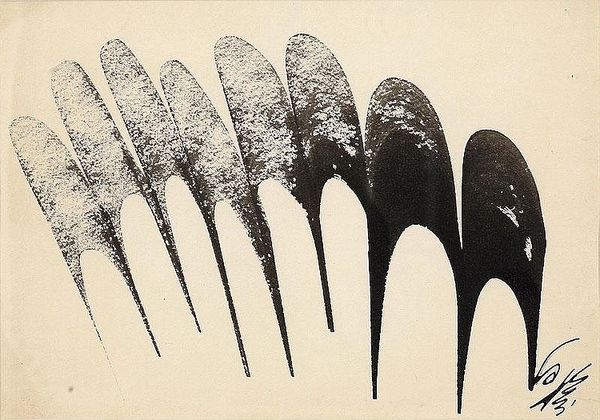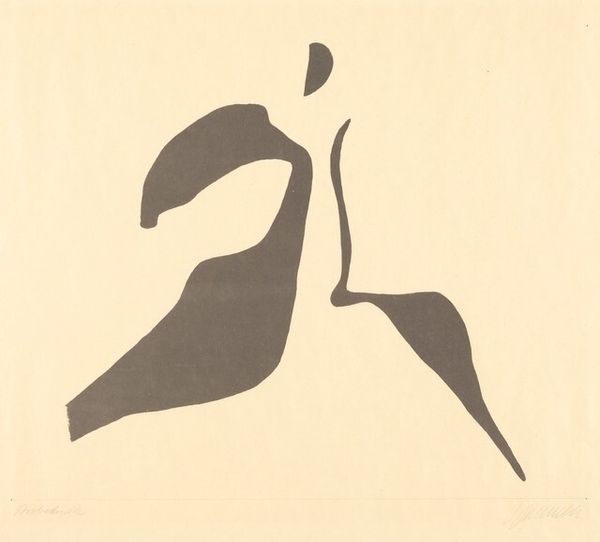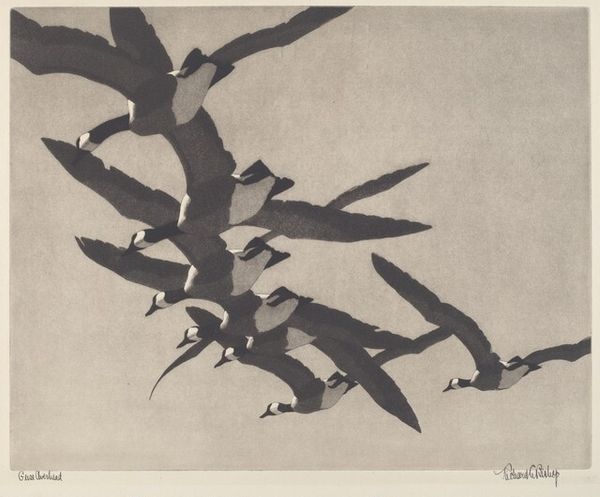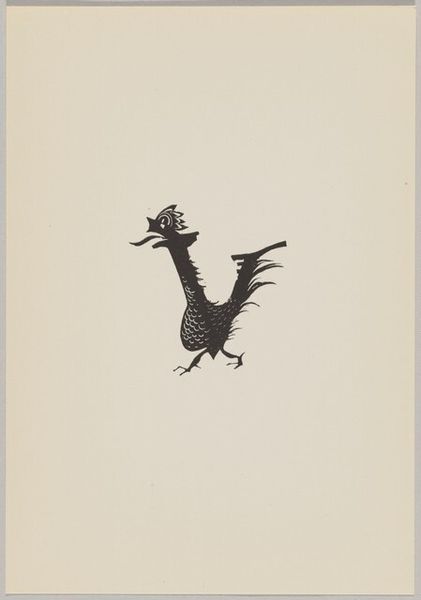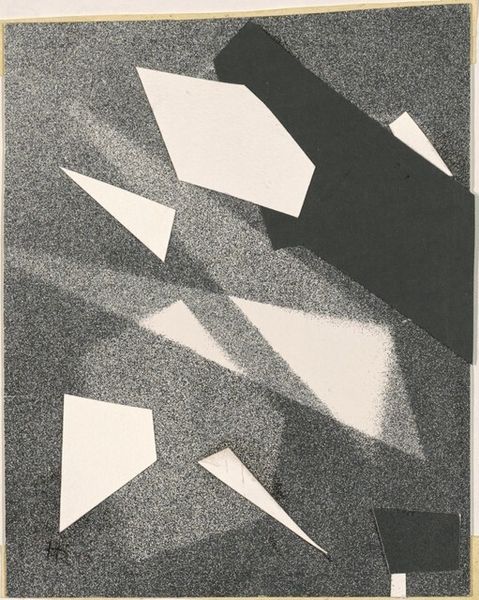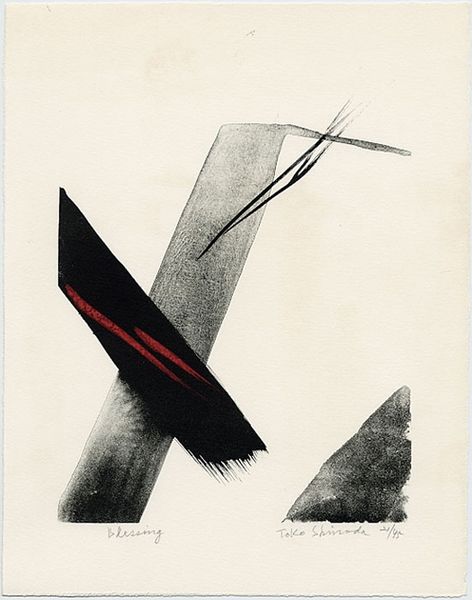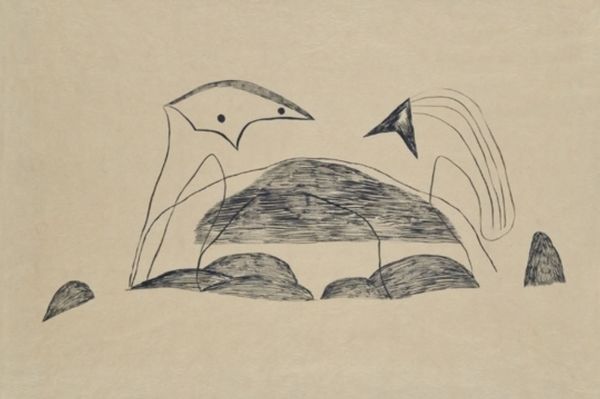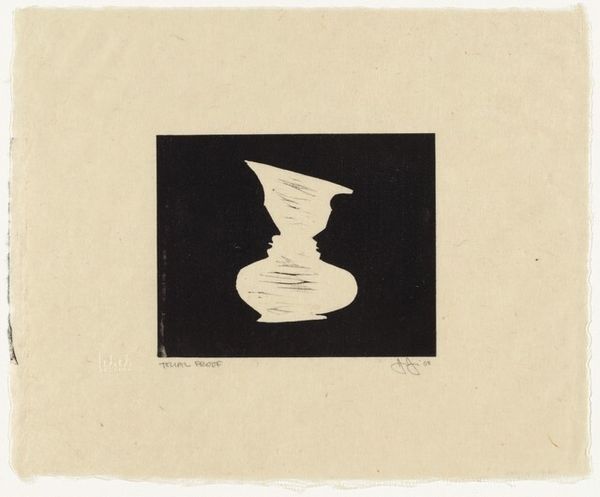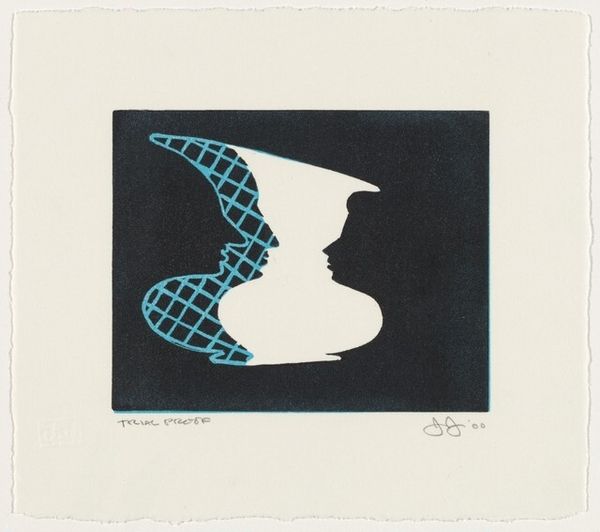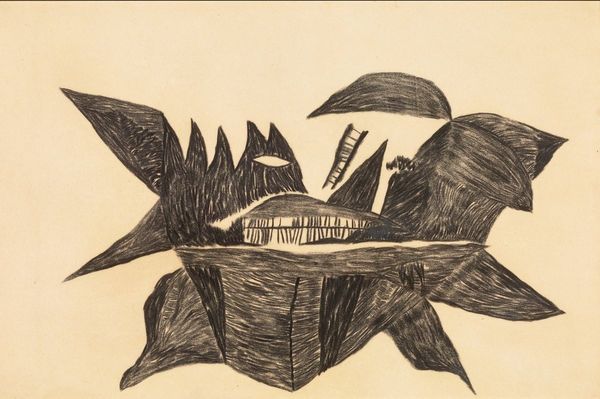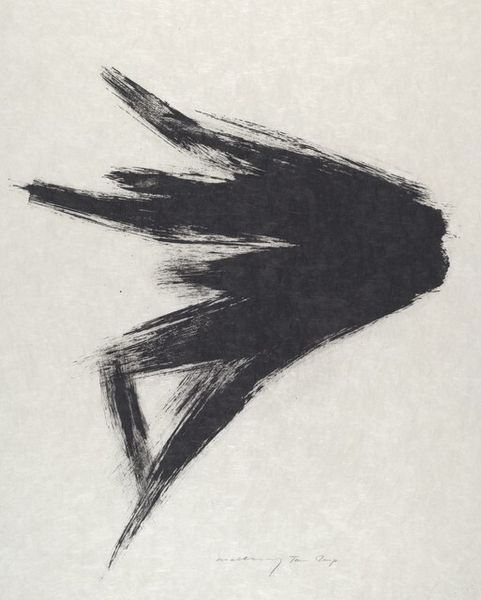
Dimensions: image: 24.13 × 27.62 cm (9 1/2 × 10 7/8 in.) sheet: 34.29 × 43.18 cm (13 1/2 × 17 in.)
Copyright: National Gallery of Art: CC0 1.0
Curator: Standing before us is Gustave Baumann’s linocut, “Bright Angel Trail,” crafted in 1922. Editor: Striking! The stark contrast and geometric abstraction give it an almost unnerving presence, as if gazing into an ancient glyph. Curator: Baumann, a key figure in the American color woodcut revival, used his prints to engage with the landscapes and communities of the American Southwest. Consider his choice of the Bright Angel Trail – a well-trodden path into the Grand Canyon. It's interesting that he choose such a familiar site to make his image. Editor: The starkness resonates deeply with the unforgiving environment, a psychological depiction of confronting the sublime natural world. It looks daunting! It evokes themes of pilgrimage and encountering the elemental. What do you think his motivations were for choosing such a perspective? Curator: I think this abstracted view provides a fresh vision of familiar spaces like national parks in America. Baumann challenges viewers to think critically about conservation and the meaning we ascribe to land itself. What's especially compelling is how the art echoes Indigenous rock carvings of the region. Editor: Yes, the interplay of light and shadow distills the experience to essential forms – vertical ascents meeting horizontal journeys. It almost mirrors patterns of ritual, not unlike a Yei figure from Navajo traditions representing a spirit journey. It highlights both personal experience and cultural memory through his particular style. Curator: Furthermore, it subtly subverts dominant narratives associated with early-20th-century portrayals of the West that glorified ideas such as conquest. By moving toward stark abstraction Baumann prompts us to remember that even "tamed" places retain potent cultural meanings. Editor: I appreciate how your observations illuminate the deep well of meaning he channels. Baumann makes it obvious to me how natural scenes transcend superficial beauty as places ripe with layered historical associations and cultural import, challenging our own interpretation with fresh visual insight. Curator: Absolutely. In contemplating this work, we recognize how an unassuming natural vista speaks to complex understandings of identity, history, and place, reflecting just a fraction of meanings people imbue upon geographical spaces such as this trail and the region surrounding it. Editor: It's been enriching diving deeper into the complexities imbued within "Bright Angel Trail". We appreciate you walking us through a range of insightful approaches.
Comments
No comments
Be the first to comment and join the conversation on the ultimate creative platform.


